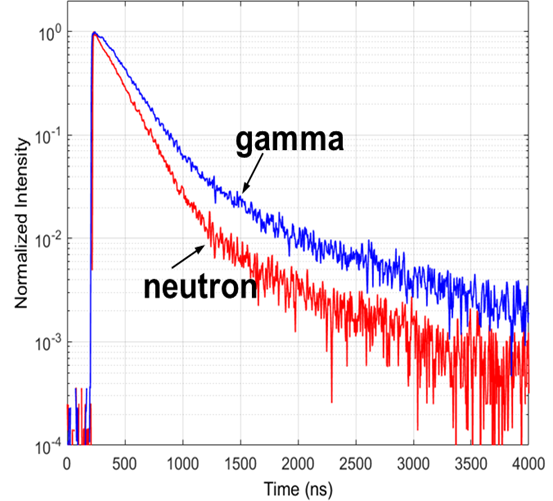NaIL is a game-changing scintillation material for gamma-ray and neutron dual detection. 6Li (95% enriched) co-doping introduces efficient thermal neutron detection to the most established gamma-ray scintillator while retaining the favorable scintillation properties of standard NaI(Tl).
Sodium Iodide crystal co-doped with Thallium and Lithium [NaI(Tl+Li)] a.k.a. NaILTM has the ability to detect Gamma radiation and Thermal Neutrons in a single crystal with exceptional PSD [FoM = 3.0].
An excellent solution for area monitoring or thermal neutron activation security application.
The use of low 6Li concentrations in NaIL and large thicknesses can achieve the same neutron detection capabilities as 3He or CLYC or CLLB detectors at a lower cost.
6Li (95% enriched) co-doping introduces efficient thermal neutron detection to the most established gamma-ray scintillator while retaining the favorable scintillation properties of standard NaI(Tl). NaIL can provide large volume, single material detectors for both gammas and neutrons at a low price per volume.
The Neutron Detection efficiency for NaIL crystals is tested with the crystal placed in a High-Density Polyethylene (HDPE) and a Cf-252 source. Read the details in this whitepaper Neutron Detection Efficiency Testing.


Specifications
| Density [g/cm3] | 3.66 |
| Melting point [K] | 924 |
| Thermal expansion coefficient [C-1] | 47.7 x 10-6 |
| Cleavage plane | <100> |
| Hardness (Mho) | 2 |
| Hygroscopic | Yes |
| Wavelength of emission max. [nm] | 419 |
| Refractive index @ emission max | 1.85 |
| Primary decay time [ns] |
240ns, 1.4us 230ns, 1.1us |
| Light yield [photons/keVγ | 35 |
| Temperature coefficient of light yield | 0.3%C-1 |
When considering neutron detection capability, often the metric A*ε is used. A is the detector area and ε is the probability of detecting an impinging thermal neutron. When price and gamma detection ability are factored in, NaIL often becomes the best solution.
| Detector | nth detection capability A*ε (cm2) |
|---|---|
| NaIL 50 Ø x 50mm [g/cm3] | 13 |
| NaIL 50 Ø x 100 mm | 26 |
| NaIL 50 Ø x100x400 mm3 [C-1] | 216 |
| 3He Ø 13 x 50 mm, 8 atm | 7 |
| 3He Ø 50 x 1830 mm, 2.9 atm | 613 |
| CLYC 50 Ø x 50 mm | 20 |
| CLLB 50 Ø x 50 mm | 22 |


